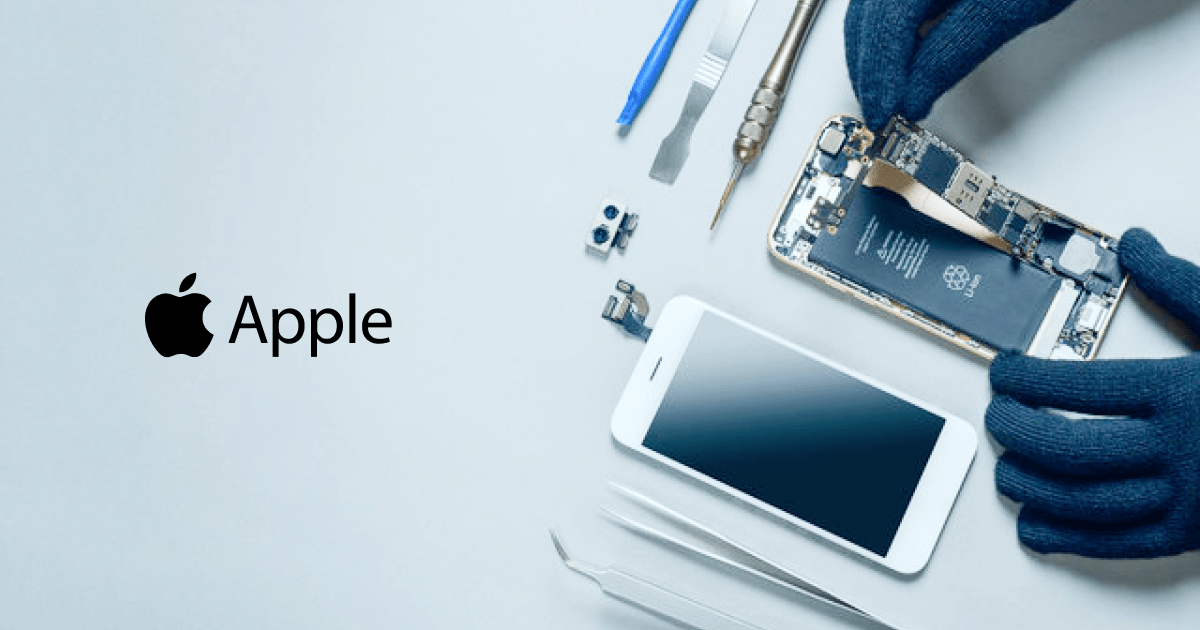O programa de autoreparo da Apple inicia sua longa jornada de sustentabilidade
Há um mês, a Apple lançou seu programa de autosserviço de reparos. Finalmente, os indivíduos obtiveram uma alternativa oficial para consertar iPhones. Foi projetado para ser uma opção para manter toda a funcionalidade de nossos iPhones sem "arruinar" recursos-chave. Além disso, acreditávamos que ofereceria preços acessíveis para trabalhos de reparo adequados a todos os usuários de iPhone. Embora deva ser observado que a Apple ainda não cumpriu totalmente o espírito de autoreparo, no entanto, a empresa fez um bom começo.
Sobre o programa
- Atualmente, o programa de reparo DIY da Apple está disponível apenas nos Estados Unidos. A empresa tem planos de sugerir seu serviço para a maioria dos países europeus até o final de 2022;
- Os usuários podem consertar os modelos de iPhone 12 e 13, bem como o iPhone SE, com a ajuda de instruções especiais em seu site;
- Os membros do programa podem ter acesso a um catálogo com 200 tipos de ferramentas e componentes para consertar telefones usados. A Apple permite a substituição dos seguintes módulos de smartphone: bateria, tela, câmera principal, alto-falante, Taptic Engine e bandeja de cartão SIM.
Custa quase tanto quanto a autoreparação
Como você sabe, o maior problema ao consertar um telefone usado é sua bateria. É assim que se parece o kit de substituição da bateria do iPhone 13/13 Pro:
Além dos próprios componentes, você precisará de ferramentas especiais para consertá-los. Certamente, essas podem ser encontradas no AliExpress e encomendadas a partir dele, mas nem todos os proprietários da Apple podem estar preparados para fazer isso. Dentro de seu programa de reparo, a empresa fornece aos clientes kits especiais de reparo contendo todo o equipamento necessário. Mas não é tão simples assim: o kit é composto por ferramentas especiais profissionais que nem todos os clientes serão capazes de manusear. A Apple empresta o kit, e tudo terá que ser devolvido intacto após o uso de 7 dias, caso contrário, você terá que arcar com o custo das ferramentas defeituosas.

O custo de algumas ferramentas no kit excede US$ 200, tornando a encomenda dos equipamentos extremamente arriscada. Não há apenas o risco de os indivíduos danificarem seus smartphones, mas também de as ferramentas quebrarem durante o reparo. E tudo isso é sugerido em prol de economizar de 15 a 30% do custo do reparo em um centro de serviços oficial.
Satisfação do cliente
O serviço já provocou uma onda de críticas dos usuários. Inicialmente, os usuários ficaram perplexos com o depósito de US$ 1000 necessário para alugar um conjunto de ferramentas necessário para realizar, por exemplo, uma substituição de tela. Este depósito pode ser não reembolsável se as ferramentas forem devolvidas em uma condição que a Apple considere insatisfatória ou após os 7 dias especificados no contrato de locação.
A próxima insatisfação está relacionada à gama muito limitada de modelos de iPhone disponíveis para autoreparo usando o novo serviço: iPhone 12/13 e iPhone SE (3ª geração).
Existem pelo menos alguns casos em que custa mais caro reparar o dispositivo por conta própria do que ter o serviço feito por um provedor de serviços.
Para ser honesto, este serviço não é uma solução ideal
A Microsoft publicou os resultados de sua pesquisa observando os benefícios para o meio ambiente através da simplificação dos procedimentos de reparo de telefones e confirma o que os defensores da escolha de reparo têm afirmado há anos: consertar telefones usados em vez de adquirir novos mantém o nível de resíduos e emissões associado à fabricação de novos dispositivos no mínimo. Esta é a ideia principal do programa "direito de reparo".
O estudo da Microsoft foi publicado quase ao mesmo tempo em que a Apple estava lançando seu programa DIY. Falando nisso, a quantidade de iniciativas semelhantes está aumentando dramaticamente: de final de março a início de abril, Samsung e Google ambos anunciaram planos para oferecer peças originais de reposição à venda através de uma cooperação com o site iFixit. Ambos esses empreendimentos devem começar nos próximos meses.
O serviço da Apple é o que o mercado está falando agora. O fabricante está tentando uma nova direção, os usuários estão dando seu feedback e as informações estão se espalhando ativamente na Internet. Muitas pessoas veem essa notícia como uma exclusão dos centros de serviços do mercado: as pessoas estarão mais inclinadas a consertar com as próprias mãos, usando peças oficiais a um preço mais baixo.
Se você é um usuário avançado com conhecimento da estrutura do smartphone e experiência em montagem e desmontagem, isso é uma vantagem, pois você pode economizar muito nos reparos. Por outro lado, vamos ser claros, quantos proprietários comuns de iPhone são especialistas tecnicamente qualificados? Quantos deles não hesitariam em reparar um dispositivo complicado em casa? É uma nova era para o mercado digital (especialmente para os proprietários da Apple e do iPhone), mas como dissemos, este programa não é uma solução ideal:
- Falta de diagnóstico profissional antes do reparo. O dispositivo é reparado com base em conclusões pessoais e subjetivas;
- Danos ao gadget durante a desmontagem ou montagem. Quebra de componentes do sistema (cabos planos do display, pinos, conectores) devido à instalação incorreta;
- Métodos de reparo não razoáveis. Por exemplo, você pode encomendar e substituir o conjunto do display sozinho, ou pode apenas substituir o vidro da tela no serviço, o que é muito mais barato;
- Falta de opções de reparo flexíveis. Em poucas palavras, o Autoreparo é uma substituição modular de componentes, enquanto muitas falhas são resolvidas por meio de reparo de componentes;
- Risco de anulação da garantia se o dispositivo for danificado, resultando em reparos mais caros com seus erros corrigidos no centro de serviço.
O serviço de reparo da Apple é principalmente feito para clientes e não é implementado em negócios. Para serviços e lojas que lidam com telefones usados, ainda é relevante usar software especial. NSYS Diagnostics - software confiável para diagnóstico de dispositivos móveis. Fornece identificação rápida e automatizada de defeitos para dispositivos iOS e Android. Oferecendo diagnósticos completos e certificados em 2-3 minutos, reduzindo erros humanos e aumentando significativamente a produtividade. Isso é o que seu negócio precisa.
No geral, o programa de autoreparo da Apple é uma revolução ou apenas mais um truque de marketing para atrair atenção - vamos saber no futuro próximo. O primeiro feedback mostrou resultados mistos - as pessoas ainda preferem consertar seus dispositivos em centros de serviços. Vamos ver o que acontece a seguir!






